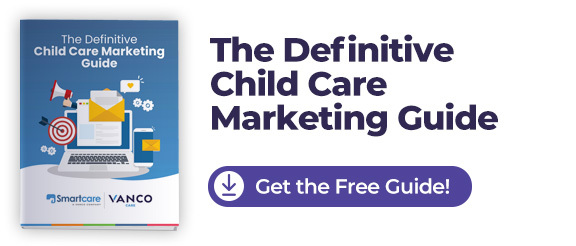Looking for a sample daycare organizational chart? You’re not alone. There are almost 4 million childcare centers in the United States, and with that comes almost as many childcare center organizational structures, which are often changing. If you are looking to start your own center or compare your center’s organizational structure with others, we’re here to help! We’ve put together a sample organizational chart for a daycare center to outline the different positions and jobs.
From your management team for the daycare center to your support staff, read on to find out how to include everyone in your organizational chart!
Table of Contents
- Daycare Organizational Chart Sample
- Do I Need an Organizational Chart for My Daycare Center?
- Types of Daycare Centers
- Staffing Your Childcare Center
- How to Create an Organizational Chart for Your Daycare
- Distribute and Discuss Your Organizational Chart
Daycare Organizational Chart Sample
There’s no one size that fits all when it comes to an organizational chart for daycare centers, but to give you an idea of the typical child care center, we built a sample. This sample shows a variety of the positions within a daycare center. Click here to get the full-sized image of the daycare organizational chart sample.
If you would like to use this daycare organizational chart as a basis to create your own, here’s the PDF file for you to adjust it to your liking.
Do I Need an Organizational Chart for My Daycare Center?
Childcare centers can range in size and function. They can consist of one person providing care out of their home; be a large corporation with upper management and a full organizational structure or be somewhere between. Either way, it is important to outline the positions and responsibilities of each member of the childcare team.
To operate a childcare center that provides valuable service to families, it is important to have a clear vision of how you want your center to run. Employees need to understand their roles and who they will report to. Once you’ve created your organizational chart, discuss it with your employees and answer any questions they might have.
Types of Daycare Centers
There are three main types of daycare centers to add to your daycare organizational chart; home childcare centers, center-based daycares, and non-profit childcare centers. Each one is important and has its place in the childcare industry.
Home childcare centers are typically run by one person who is able to manage all the day-to-day responsibilities. Center-based daycares are staffed with licensed employees and will have a management staff. Non-profit daycares are usually formed for the benefit of a particular group of parents and children.
Home Child Care Centers
Home childcare centers typically won’t need to use an organizational structure as there is one person handling the running of the center. If the center continues to grow and employees are hired, an organizational structure will become necessary.
Center-Based Childcare
Center-based daycares need to have an organizational structure to run smoothly. These centers are often run by a larger corporation and have many channels of reporting. In order for employees to understand the roles, it is important for them to know exactly who they should report to.
Non-Profit Childcare
Non-profit childcare centers are typically managed by a volunteer board of directors. This board is typically made up of parents whose children attend the program. There can be a director and assistant director that oversees the day-to-day operations and teachers in each classroom.
Staffing Your Childcare Center
Childcare employees should have experience in child care or child-related fields of study. Requirements for childcare employees vary from state, to state and some require administrators and childcare teachers to have related degrees or certifications. Before staffing your center, you should become familiar with your state’s laws and guidelines.
Management Team
The first thing you need to do is to decide who is going to be making the decisions for your center. If you are running an in-home daycare, this will typically be the sole owner and operator. If you have a center-based daycare, this will require a bit more thought for who is on your management team for the daycare center.
Childcare centers can have different levels of management. These can consist of a larger corporation, a board of directors, an owner or the administration. If the center is funded by the government, there may be some government officials who make decisions.
No matter the size of the child care center, it is important that employees understand who they are to report to. Creating a flow of management allows for the smooth functioning of day-to-day operations.
Management Team Responsibilities
Another point to add to your daycare organizational chart is defining each team member’s responsibility. Once you’ve decided who is in charge of making decisions for your childcare center, you need to let each person know their role. Each member of management needs to not only understand their job but also those around them. It is imperative as the owner to outline each position and what they are responsible for and to share that information with all employees.
For example, the director of the center may be in charge of daily decision-making, but any large issues must be discussed with management. Also, if employees have questions or concerns, they should know who to go to. If they are to report to the director with these concerns, they shouldn’t contact the owner or board of directors.
Non-Management Positions
The majority of positions in childcare are non-management, adding up to almost 500,000 childcare workers in the U.S. These positions can include lead teachers and assistant teachers who are in charge of individual classrooms.
Non-management also consists of the support staff, which can be office managers, bookkeepers, cooks, janitorial staff, or healthcare workers. These positions typically help the entire center and are not tied to individual classrooms.
Non- Management Responsibilities
Non-management positions vary widely and should have short descriptions of duties for each worker. Knowing who support staff reports to makes running a center easier for all employees.
If each childcare room is going to have a head teacher or lead teacher, they should report to the administration. Assistant teachers should report to their classroom’s lead teacher. Any volunteers or interns can direct questions and concerns to an assistant teacher or lead teacher.
The support staff will likely report to the administration. They may also report to the owner of the daycare center.
How to Create an Organizational Chart for Your Daycare
You now understand the different positions needed to operate a childcare center and add that to your daycare organizational chart. Next, we will move on to creating a visual organizational chart for your daycare. Having a flowchart laid out makes it easy for employees to follow and understand roles and responsibilities.
When creating your organizational chart, there are many different avenues you can take. The simplest is to create your chart with word processing software. If you are looking for pre-made templates, Canva (a free online design software) has many great options.
Using simple rectangles and text boxes, you can add positions and names to each and connect them to who they should report to with lines. Color coding the different departments would also help organize the chart. Be sure to put the employees with more responsibilities at the top and work your way down.
If there are employees in different departments with the same amount of authority, they should be placed at the same level as each other on the chart.
What Positions Should Be Included in the Chart?
The size and style of your daycare center will determine the positions you will have available. A typical center-based daycare will have positions that include the director, assistant director, administrative assistant, head/lead teacher, assistant teacher, cook, and janitorial staff. There may also be supervisors for each classroom (infant, toddler, preschool).
Each of these positions should have its own box on the organizational chart and should be connected to whoever it will report to. Classroom supervisors should report to the director or assistant director. Classroom teachers should report to their individual supervisors. All non-childcare staff should report to the director or assistant director.
Special Circumstances
If you are running a daycare center that is part of a larger corporation, your daycare organizational chart will look different. There will typically be a regional manager who will oversee your center and report back to the home office.
A non-profit daycare will be managed by a volunteer board of directors (usually parents). The director will report to the board, instead of to upper management.
Distribute and Discuss Your Organizational Chart
Hooray! You’ve finished outlining all the positions in your childcare center and created your daycare organizational chart! You’re ready to share it with your employees.
It’s best to print out a copy for each member of the staff and go over it together. This leaves no room for confusion when it comes to the reporting structure of your center. Be sure to give employees the chance to ask questions or address any concerns they may have.
When a new employee joins the staff, be sure to add their name and position to the chart. Make sure to add them to the correct position in the hierarchy of the child care center organizational structure.
These charts are also a great thing to bring out at performance reviews. It allows employees to have a visual of how they might work their way up and gain more responsibilities in the center. For example, an assistant teacher may be interested in becoming a lead teacher when more education and experience are gained.











